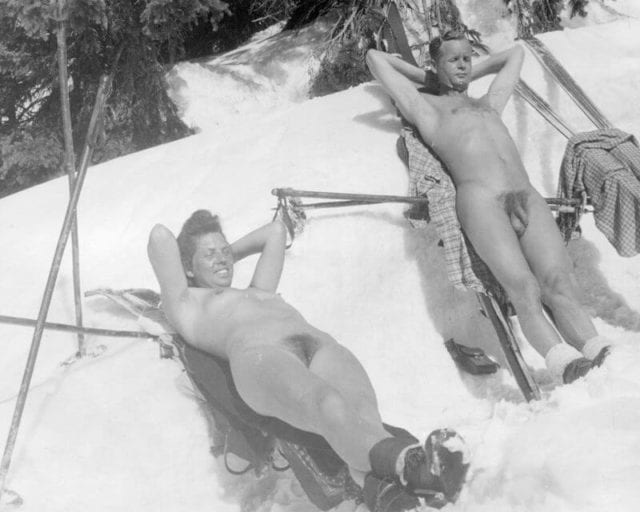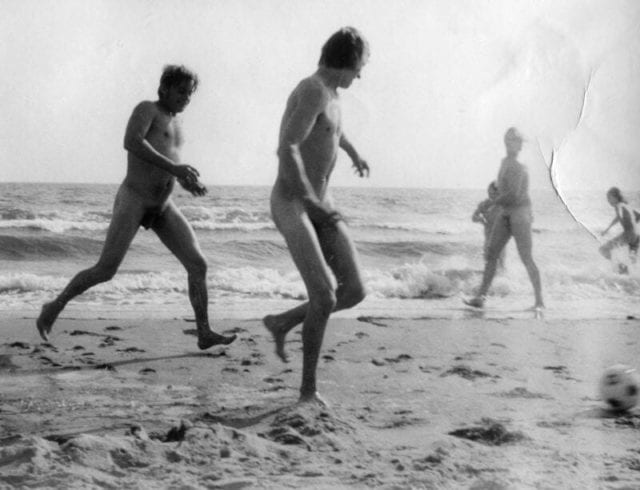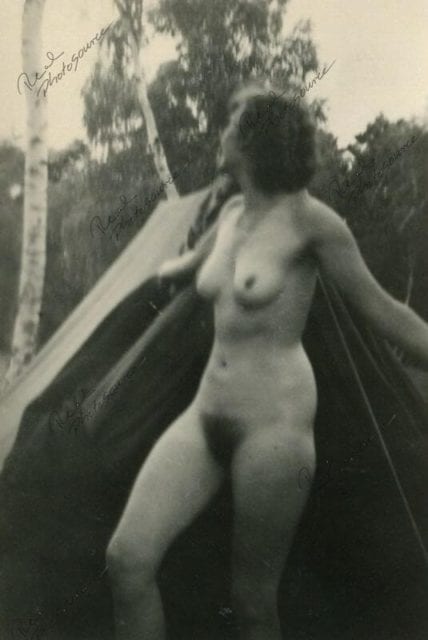Nudism probably first developed in Germany in the late 19th century. Today it is internationally known and regulated in most states where it is allowed. This means that there are designated zones of textile-free appearance to prevent conflicts between supporters and opponents of the naturist movement.
It has been a long road to this status: even in Germany, nude public appearance was strictly forbidden at times. Even currently (2021), it can still be punished in certain public zones as an excitation of public nuisance if it is, for example, in a sexualized (exhibitionist) context. For this reason, knowledge of and compliance with rules and zones designated for nudism, which are often beaches, is important.
There are enough of such zones especially in Germany because of its history, which is now over 120 years old. This has developed differently after the Second World War in the two German states FRG and GDR.
My video on the subject:
Historical development of naturism
The naturist movement was rooted in a rejection of the strictly regulated, uniformed working life of the burgeoning industrial society of the 19th century. The strict regulations of the large industrial companies, which were perceived as compulsory, including the strict clothing regulations (for practical and occupational safety reasons), were opposed by naturists to nudity and also to veganism, closeness to nature and the pursuit of agricultural self-sufficiency.
They felt that urban life in industrial society was degenerate: they wanted to get back to nature. Moreover, doing without clothing had the social aspect at that time, much more than it does today, that naked people’s status is not visible. Money and power play no role for them. They had to respect each other and overcome feelings of shame. When they practice nudism collectively, they experience it as liberating across social barriers. In addition, they feel at one with nature, which knows no artificial clothing.
Sexual references of nudity were already denied then and are still denied by naturists today. In fact, it is a remarkable phenomenon that sexual assaults in nudist zones are almost non-existent. In this regard, there are many studies that prove that sexuality and the associated nudity have a strong social connection: They belong in the intimate area of the partnership and are also always a form of communication (up to the exercise of power), which finds no place in the nudist zone. It is true that it can occasionally be observed on nudist beaches that couples who are already in a relationship are physically very close to each other, but this is not the rule. The couples then also disappear behind a privacy screen.
Dating strangers is unusual on the nudist beach and has little chance of success. The nudists were aware of these rules even more than 100 years ago. Therefore, even then, nudist culture was able to establish itself outside of beaches, for example in sports clubs. Important for the success of a pleasant nudist culture was and is the group consensus, which explicitly excludes sexuality and eroticism. This even requires control of one’s own looks at strangers, which of course must not wander up and down their bodies.
Even in the early days of the naturist movement, clubs and associations were formed whose bylaws prohibited open sexual behavior while practicing naturism. On nudist beaches, which anyone can freely enter, sexuality is frowned upon. Therefore, the advertising of erotic providers with nudism (or sauna) seems extremely strange to people who really know them.
Knowing and accepting such rules, the first nudist club in Germany was founded in Essen in 1898, which was possibly also the first in the world. Around the turn of the 20th century, larger nude bathing areas were established on the German coasts and in the Berlin area.
Conservative circles fought the movement ideologically, which is why naturists increasingly organized themselves into clubs. Their organizational forms were based on earlier nature movements such as the Wandervogel movement. Ideologically, they were very diversely oriented. There were (according to today’s understanding) left-wing to green as well as right-wing supporters of the naturist movement.
The National Socialists also propagated nudity as a return to the ancient athlete and warrior or the Germanic (Teutonic) hero. Even important protagonists of the naturist movement such as Heinrich Pudor or Richard Ungewitter were close to Nazi ideology and were anti-Semites, while others such as Adolf Koch were socialists. The Weimar Republic and the free-spirited 1920s gave the naturist movement a boost, and famous centers were formed, again centered on the lakes of Berlin and on the coasts or islands.
The many clubs were then integrated into National Socialist organizations from 1933 onwards (including the “Bund für Leibeszucht”) or dissolved if this integration was rejected. Although the Nazi state initially banned “wild” nude bathing, it relaxed this ban from 1942 onwards if naturists kept to themselves. Such legislation persisted until the 1960s in the FRG and until the 1990s, i.e. throughout, in the GDR.
Nudism in the FRG
As early as 1949, a German naturist association was founded in the western zones of Germany, which consisted of several clubs. These published magazines, which were classified as “harmful to young people” in the young Federal Republic. In 1953, the fkk-jugend was founded in Hanover, which initially bore the epithet “Bund der Lichtscharen,” again creating an ideological link to the naturalism of the Weimar Republic.
As early as the early 1950s, the first nudist resorts appeared in Western Europe, for example in the south of France (Centre-Hélio-Marin in Montalivet-les-Bains). Nudism regained a de-tabooed status as it had in the early 20th century; at the same time, as then, it was opposed by conservative circles. Around 1965, the number of members of nudist clubs in the FRG increased by leaps and bounds.
The media contributed to this: Since the early 1960s, they had repeatedly reported on nude beaches on the island of Sylt, on the West German Baltic coast, in Yugoslavia and in France. Travel agencies took up the suggestion and arranged targeted trips to these vacation destinations. A socially recognized need for “freedom to be naked” emerged, which in turn had a political-social background, as it had since the origins of the naturist movement in the late 19th century: people wanted to free themselves from the conservative spirit of the postwar era.
For some protagonists of this love of freedom, the rebellion against the conservative structures of the FRG led to the 68er movement. Culture also took up nudity starting in 1968, using it as a stylistic device in action art and theater. All this was also protest against state and church norms. The nudists in the left-wing 68 movement referred with clear ideological reference to the nudist beaches in socialist Yugoslavia and the GDR. However, nude beaches were tolerated rather than officially designated.
Thus, for decades, nudists repeatedly tested the limits of tolerance. For example, a scene of “nudists” developed in Munich’s English Garden starting in 1979/80, who were initially admonished or even expelled by the Munich police, but were eventually tolerated. After a short time, the Munich city government designated two larger areas of the English Garden as official nudist zones. In doing so, they created the world’s first inner-city nude recreation area.
Berlin soon followed suit with similar ordinances for its lakes and tolerated nudism in other regions. The coasts followed suit. The popularity of nudist clubs declined as a result. It was no longer essential to organize in them, since there were eventually enough officially designated or tolerated nudist zones. At the beginning of the 1970s, these clubs still had around 150,000 members in the FRG; by the end of the 1990s, there were still 60,000, with a further downward trend.
In the 2020s, these clubs practically no longer play a role. Those who want to practice nudism go to one of the beaches designated for this purpose or book a trip that includes such activities. This is not only a gain: the clubs had also cultivated sporting free-body activities that dated back to the movement’s beginnings in the late 19th century and are now in danger of being forgotten.
Nudism in the GDR
The development in the GDR was similar to that in the FRG: nudism was initially tolerated, and in some cases ideologically opposed. Before 1965, it was still banned in many places, but since the 1970s at the latest, it has been tolerated in certain zones. Intervention by the authorities occurred at best in rare cases when someone violated these zones. Since the 1970s, these zones have been designated on the Baltic coast, on Usedom, Rügen and Hiddensee, as well as on a number of inland waterways.
There was relatively great discipline in observing the unwritten rule of using the nudist beach without textiles, and the textile beach only in swimwear. The nudist movement lacked the subversive element of its West German counterpart, because it was no longer officially frowned upon from the 1970s at the latest. At best, illegal bathing and thus also nude bathing in gravel pits, where bathing was prohibited for safety reasons, still had a subversive touch.
At best, however, it was due to the convenience of the bathers, who did not want to go to a more distant body of water that was permitted as a bathing spot. The SED leadership obviously liked the free body culture because it gave people a sense of freedom that was otherwise lacking everywhere in the GDR. In addition to this kind of permissiveness, which was also almost entirely desexualized in the GDR, there was also a lot of eroticism (but no pornography) produced there.
The whole society was somewhat more sexualized, people devoted themselves lovingly to their extramarital affairs, and there was no moral control either by the marginalized churches or by the state. This style, which included the extensive practice of free body culture, distracted from the lack of freedom to travel, the Wall, barbed wire, orders to shoot refugees, and drastically limited economic opportunities.
In this way, a greater tolerance for nudism gradually developed in the GDR than in the FRG. After reunification, this led in part to cultural misunderstandings between East and West German bathers at East German nudist beaches: East Germans strictly adhere to the rule of appearing completely nude. The West Germans do not take that so exactly, because everyone may live after its Fasson.
But people in swimming trunks or bikinis are undesirable on an East German nudist beach. By the way, there were and still are such conflicts with Polish bathers at the easternmost parts of the Baltic Sea beaches (near the border): The Poles hardly know any nudist culture, they were and are partly shocked by the East German understanding of nudism.
Nudist culture in united Germany
Due to historical developments after 1950, there are slightly more designated nudist zones in eastern Germany than in western Germany. At the same time, a much more relaxed attitude toward compulsory nudism on designated beaches has developed, especially among younger East Germans.
No one now accosts a person in swimwear on a nudist beach, telling him that he should take off his clothes. Nudist culture is no longer an outlet for serious restrictions on civil liberties and economic opportunities, so that the attitudes of West and East Germans on this issue are now converging.
In the meantime, at all German nudist beaches and at nudist campsites, everyone is free to decide on his or her personal clothing according to mood and weather. In some cases, the operators and guests of some nudist zones expect everyone present to appear completely naked, weather permitting. Naturists should be aware of these zones, as conflicts can still arise there between die-hard naturists and less purist guests. Overall, it can be expected that from about 2030 to 2040 there will no longer be a difference between a West and an East German naturist culture.

Schwules FKK Paar in Griechenland 1970er 
Schwules FKK Paar am Strand 1970er 
Homosexuelles FKK Paar im Liegestuhl 1970er Jahre 
Mann und Frau Skifahrer FKK um 1940 
FKK Männer am Ostseestrand 1970er 
FKK Mann in Italien 
FKK in Deutschland der 1930er Jahre 
FKK im Schnee – Deutschland 1940 
FKK im Hotelzimmer 1970er Jahre 
DDR FKK Mädchen mit festen Brüsten 
DDR FKK Frau am Ostseestrand 
FKK an der Strandbar 1970er 
FKK DDR Frau am Kraftrad 
FKK Frau im Schnee – Deutschland 1940 
FKK Frau in Deutschland der 1930er Jahre 
FKK Frau und Mann 1970er 
FKK im Schnee – Deutschland 1940 – 2 Männer an den Felsen

